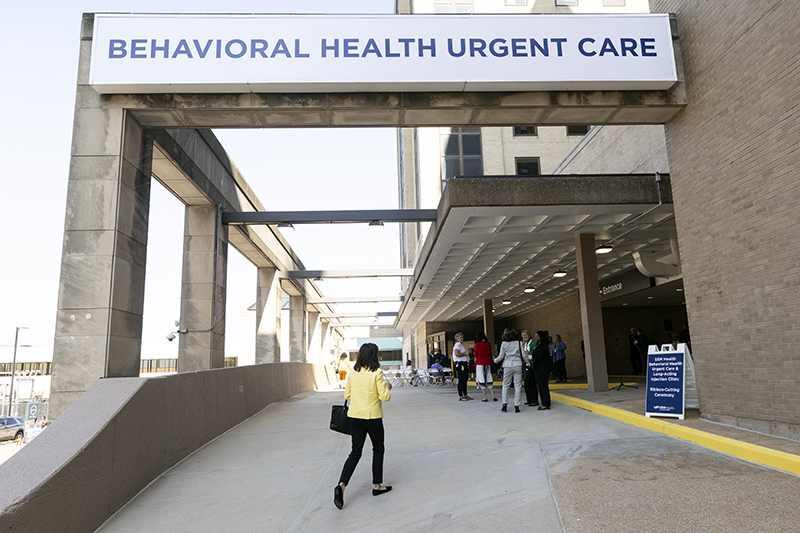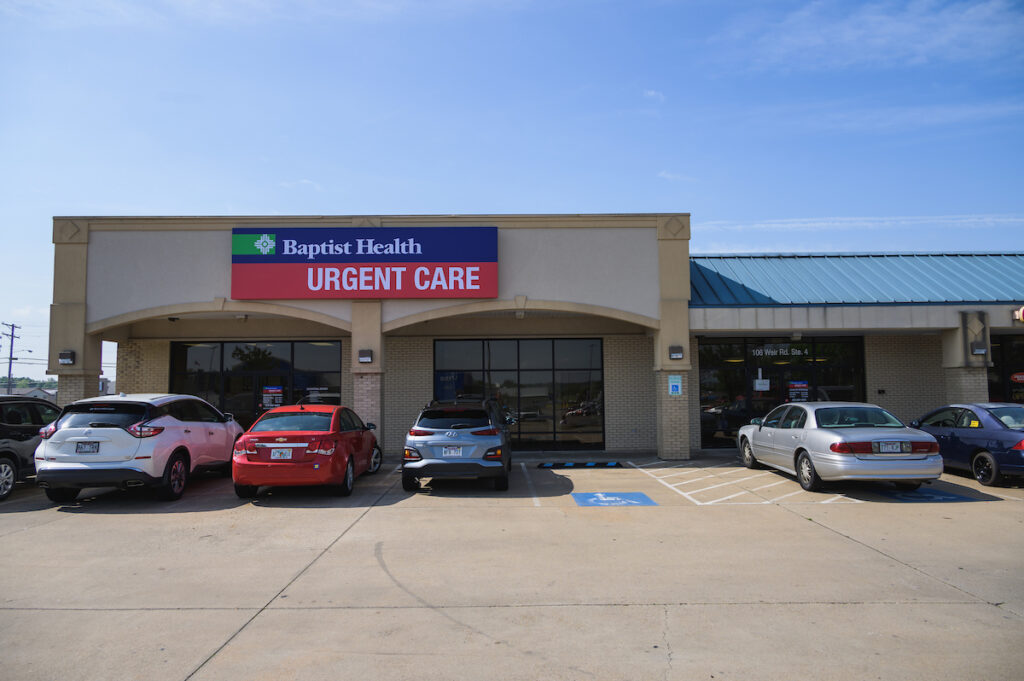The Importance of Urgent Treatment Centers in Connecting the Gap Between Primary Care and Emergency Services
Immediate treatment facilities have become a crucial component of the medical care landscape, effectively dealing with the critical requirement for prompt clinical attention without considering emergency situation services. By offering take care of non-life-threatening conditions, these centers assist to minimize the concern on emergency rooms and improve patient accessibility to timely therapy. Their expanded hours and diverse services satisfy a growing populace looking for choices to typical health care. Nevertheless, the progressing role of urgent treatment centers elevates important concerns concerning their integration within the more comprehensive health care system and the effects for client results and source allocation.
Review of Urgent Treatment Centers
Urgent treatment centers have become a necessary element of the healthcare delivery system, providing accessible medical solutions for non-life-threatening conditions. These centers typically operate outside conventional workplace hours, offering people an option to emergency areas and medical care setups. People seeking urgent treatment frequently present with concerns such as minor injuries, infections, or diseases that call for timely attention yet do not posture a prompt danger to life or limb.
Urgent care facilities are staffed by a variety of healthcare experts, including doctors, nurse practitioners, and physician assistants, who are outfitted to detect and treat numerous clinical problems. They usually include diagnostic devices such as X-ray machines and laboratory solutions, allowing them to offer thorough treatment on-site.
The facility of urgent treatment centers has actually been influenced by the boosting demand for timely medical solutions in a fast-paced society, where people may have a hard time to protect consultations with key care companies. Because of this, these facilities intend to alleviate blockage in emergency departments, improving overall healthcare efficiency. In addition, urgent treatment centers typically act as a bridge in between health care and emergency situation services, ensuring that people get suitable treatment tailored to their certain medical needs.

Benefits of Urgent Treatment Solutions
Accessing prompt medical care is a significant advantage of immediate treatment services. These facilities provide immediate interest for non-life-threatening problems, efficiently lowering wait times compared to conventional emergency situation divisions. Individuals looking for care for minor injuries, illnesses, or urgent health concerns can get treatment without the lengthy hold-ups usually related to medical facility check outs.
One more secret benefit is the extended hours of operation. Lots of urgent care centers are open nights and weekends, suiting patients who might not be able to visit their key treatment supplier throughout standard office hours. This versatility makes immediate care an available alternative for those with busy routines or sudden health and wellness concerns.
Furthermore, urgent care facilities frequently provide a variety of solutions, including diagnostic testing, X-rays, and basic laboratory solutions. This thorough strategy enables fast diagnosis and therapy, boosting individual contentment.
In addition, immediate care facilities are generally much more affordable than emergency clinic, making them an appealing alternative for individuals without insurance policy or those with high-deductible strategies. Overall, immediate treatment solutions play a crucial duty in supplying accessible, timely, and budget-friendly clinical treatment.
Contrast With Health Care
Commonly, patients frequently consider their choices in between immediate treatment centers and medical care suppliers when seeking clinical focus. Both offer crucial duties in the medical care system, yet they differ considerably in range, access, and cost.
Health care providers are typically the first factor of get in touch with for individuals, concentrating on long-term wellness administration, preventative care, and chronic disease monitoring. They provide connection of treatment, cultivating a patient-provider partnership that enables thorough health and wellness analyses and customized therapy strategies. Nevertheless, scheduling a visit can be time-consuming, usually needing days or weeks beforehand.
On the other hand, immediate care centers supply instant look after non-life-threatening conditions that require punctual focus, such as minor injuries or infections. These facilities usually run beyond traditional office hours, suiting patients that might not have the ability to see their main care carrier during regular organization times. In addition, immediate care is typically extra cost-effective than emergency clinic check outs, making it an enticing alternative for those with restricted health care access.
Eventually, while immediate treatment centers and health care companies both add to person health and wellness, they accommodate distinctive demands, making it important for individuals to determine which alternative best straightens with their scenarios.
Emergency Situation Solutions Interaction
The communication in between immediate treatment facilities and emergency situation services is an essential element of the health care landscape, particularly when clients face circumstances that may escalate in severity. Immediate treatment facilities function as a bridge in between medical care and emergency departments, addressing non-life-threatening problems that call for immediate interest. This partnership boosts individual end results and maximizes resource allotment within the health care system.
When people provide with not lethal however immediate problems, urgent care centers can efficiently manage their demands, easing blockage in emergency clinic. Facilities geared up with diagnostic capabilities can promote prompt referrals to emergency solutions when a client's condition goes beyond the range of urgent care therapy. This smooth interaction helps make certain that people get the appropriate degree of treatment without unnecessary hold-ups.
Additionally, reliable communication in between urgent care service providers and emergency solutions is vital. Sharing client information and treatment backgrounds fosters coordinated care, reducing the danger of redundant tests and procedures. As healthcare remains to develop, the dynamic relationship between immediate treatment facilities and emergency services will play a crucial function in enhancing patient treatment performance, satisfaction, and total health and wellness results within the neighborhood.
Future of Urgent Care Facilities
As healthcare demands progress, the future of immediate treatment facilities these details is poised to become significantly important to the overall clinical environment (Urgent Care). These centers are most likely to broaden their duties by integrating innovative modern technologies, such as telemedicine, important source expert system, and digital health document combination. This will improve person access and simplify treatment control in between urgent treatment, primary care, and emergency situation solutions
Furthermore, urgent treatment facilities are anticipated to expand their service offerings to include preventative treatment and chronic condition monitoring. This shift will certainly place them as crucial elements in handling populace wellness, lowering the problem on emergency divisions, and addressing gaps in key treatment accessibility.
The expanding pattern of value-based care will certainly further speed up the makeover of urgent treatment facilities, motivating them to concentrate on patient outcomes and complete satisfaction. Facilities may also take on collaborative technique versions, functioning carefully with professionals and main care suppliers to make sure detailed client management.
Conclusion
In verdict, immediate care centers serve an essential function in the medical care system by supplying prompt accessibility to therapy for non-life-threatening conditions, properly relieving pressure on emergency situation services. Their extended hours and varied range of solutions boost individual convenience and satisfaction, while additionally guaranteeing suitable treatment shipment. As medical care needs continue to develop, the duty of immediate care facilities will likely become significantly considerable, further connecting the gap between primary treatment and emergency situation services.
The establishment of urgent treatment centers has been influenced by the boosting demand for prompt clinical solutions in a fast-paced society, where individuals may battle to safeguard visits with primary treatment carriers. Additionally, urgent care facilities commonly offer as a bridge between main treatment and emergency situation services, making certain that patients obtain proper care customized to their certain medical demands.
Many immediate care centers Source are open evenings and weekends, accommodating people that may not be able to visit their key treatment carrier during standard workplace hours (Urgent Care). As health care proceeds to develop, the dynamic connection between urgent treatment facilities and emergency services will play a pivotal role in improving patient treatment efficiency, fulfillment, and overall health and wellness end results within the area
